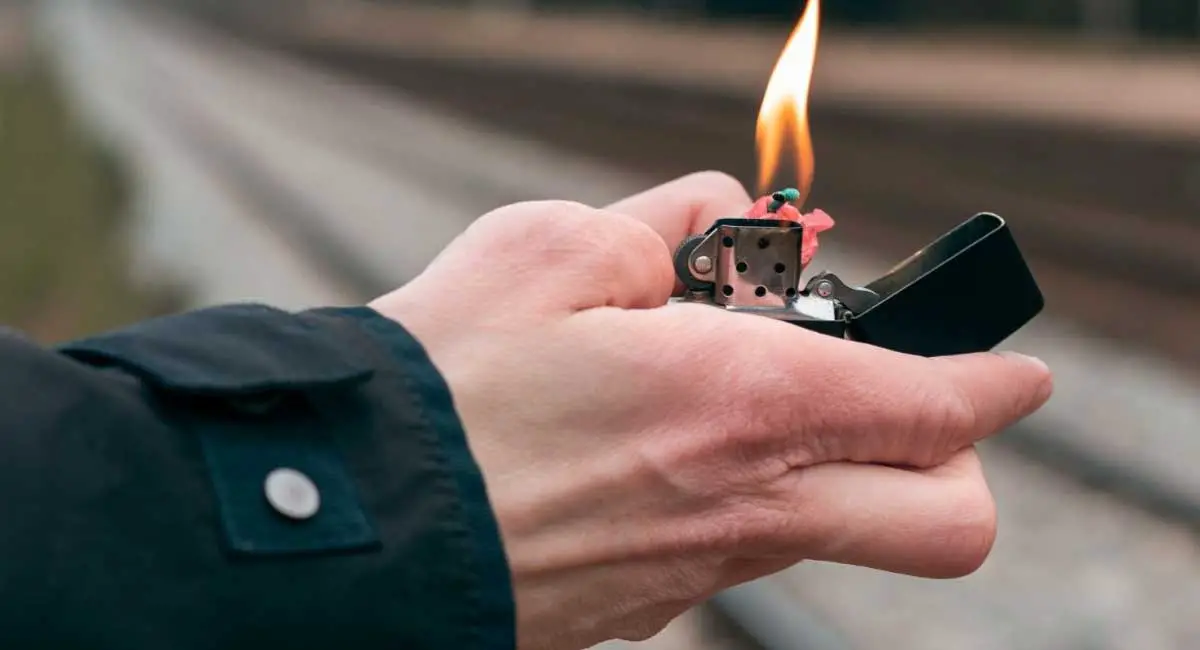When choosing a lighter, a few factors must be considered: longevity, durability, cost, and, most importantly, how long the lighter will last. You don’t need to be buying a new lighter every other day in the wish that it will last longer.
You’ll need a lighter that can get you through the day and put up with the amount of use you need it for. There are numerous long-lasting lighter options available for you to choose from, though overall, each lighter will have a different lifespan.
Some lighters can be used in ways that will extend their life, others can be easily refilled, and some lighters are simply made with an overall longer life than others. So, how long does a lighter last? This article aims to answer this question and discuss everything you need to know about lighters.
Benefits of Using a Lighter
Lighters can be useful in a variety of situations, especially since you only need one hand to operate them. This frees up an extra hand, which is useful if you ever find yourself in an emergency.
They’re also easy to store, and you don’t have to worry about taking extra precautionary measures, like with matches for example, which must be kept dry at all times. The benefit of lighters is that they’ve been designed to produce flames until they run out of fuel, which is more than we can say for their single-use counterparts.
When it’s windy, lighters become even more useful as they can withstand gusts of wind better than matches or other temporary fire starters. Some lighters are even made to be water-resistant and windproof and are typically designed for outdoor use and in survival circumstances.
These are heavier and larger than standard lighters, but they’re no less beneficial. However, even a simple light can be waterproofed with a few basic hacks, as opposed to matches, which can be rendered useless if they get wet.

Different Kinds of Lighters
Electric Lighters
Though fairly new in the world of lighters, electric lighters have made a big splash on the worldwide web.
Electric lighters are said to be the best way to light things like candles using a rechargeable device that transfers an electric arc at the push of a button. They claim to be windproof, splashproof, and an eco-friendly alternative to traditional butane lighters.
An electric lighter, also known as an arc lighter, relies on the electrical energy transmitted between the two ceramic nodes. As a result, a laser charge is generated instead of a flame. The best part of an electric lighter is that it has a battery and can be charged via micro USB. This is the same one used to charge smartphones.
BBQ Lighters
Some crystalline materials exhibit piezoelectric properties. When you put pressure on them, you get charge separation inside a voltage across the crystal that’s sometimes very high.
For example, in a barbecue lighter, the clicking sound you hear is a small spring hammer hitting a crystal and creating thousands of volts across the faces of the crystal. Such a high voltage is the same as the spark plug trigger voltage in a gasoline engine. The voltage of the crystal can create a fine spark that ignites the gas in the grill or smoker.
Butane Lighters
Butane lighters release butane liquid, stored in a pressure chamber, into a narrow streamline of gas. A spark, created by striking flint with steel or compressing a piezoelectric crystal, flames the gas.
Because butane rapidly turns to a liquid when compressed, and also rapidly to gas with reduced pressure, it’s an ideal gas to be used in lighters. Release the pressure in the container and part of the liquid instantly reverts to a gaseous state and ejects through the opening to meet its catching fire fate.
The butane flame is like a lit candle. Just like a candle wick absorbs only the amount of liquid wax it needs to power its flame, using a butane lighter uses only the amount of liquid butane it needs to maintain its flame. Manufacturers market a wide variety of secondary beneficial butane lighters selected according to the needs or desires of the user.
These include decorative lighters, lighters with engravings or logos, limited edition lighters, dressing lighters, disposable lighters of various sizes, candle lighters, lighters for outdoor stoves or firewood, and more.
Some high-end butane lighters use a button that compresses a piezoelectric crystal. The compressed crystal creates an electric arc that flames the gas.
How Long Does a Lighter Last?
Did you ever find a misplaced lighter in a drawer? Who knows how many years it’s even been when it was last used, but it still works.
So, how long does a lighter last? Lighters can last through years of use, just as long as you have the means to refill their fuel reserves. A butane lighter is likely to last through more years of use compared to electric lighters, which may experience internal or charging malfunctions.
How Long Does a Lighter Last When Burning?
Full-size lighters generally contain enough fuel to burn for 50 to 60 minutes, but not continuously. Mini lighters contain less fuel and usually have enough fuel to burn for 10 to 20 minutes. While this may seem like a miniscule lifespan, keep in mind that you likely won’t be igniting a flame for more than a few seconds each time you use it.
How to Refill a Lighter
When your lighter runs out of fuel, you’ll naturally assume that it’s time to throw it out. However, before you buy a new one, consider reusing the lighter by refilling it.
Gather the Materials
You can refill a lighter easily with a thumbtack. If you want to save money on buying a new lighter, you can use this method and keep a lighter for a long time. To refill a lighter, you’ll need butane, a pin, and three rubber gaskets.
You can buy butane and grommets at your local hardware store. You can also get a stapler and a brochure, as you may want to file the thumbtack down after filling the lighter.
Insert the Thumbscrew Into the Valve
If you turn the lighter over, you’ll see a small circular dent on the bottom. This is the lighter’s valve, which needs to be opened with the push of a button before you can fill the lighter with fuel. Insert the pin into the hole, then place the base of the pin on a hard surface such as a tabletop. This will open the bottom of the lighter. Now remove the pin!
The Lighter Should Be Completely Empty
Some liquid may leak out after removing the pin. Remember to empty any excess liquid before you fill the lighter with some fresh butane.
After removing the cap from the butane canister, there should be a small spout at the top. You have to prepare the butane tank faucet to use. Rubber grommets are small, round rubber devices with a hole.
Take the grommets and place all of them on the spout of your butane can. The rubber must pass through the nozzle tip. The eyelet prevents excess butane from spilling out as you refill the lighter.
Fill the Lighter
Turn the lighter in a downward position. Place the nozzle into the hole in the bottom of the lighter. Then, gently press down on the butane flask.
Rubber will muffle the sound, so you may not know the lighter is being filled, but it is. Wait for about 5 seconds. This is the time it takes for the lighter to fill up.
After the lighter is full, remove the butane can to prevent overflow. The liquid will squirt out if you don’t cover the hole, so place your thumb over the hole as soon as you remove the nozzle.
Conclusion
How long does a lighter last?
Lighter’s longevity depends on different factors. A lighter is composed of a metal or plastic container that’s filled with a flammable liquid or liquid gas under pressure, an igniter meant to produce a flame, and certain arrangements for extinguishing the flame.
Alternatively, lighters can be electrically powered, using an electric arc to ignite the target. Electric lighters can charge for up to three days of continuous use.
If the lighter loses some fuel and the internal pressure drops, the lighter will turn off even if there’s fuel inside. Storing lighters in a plastic bag will waste some of the fuel by evaporation, but the lighter will still work even after years.


